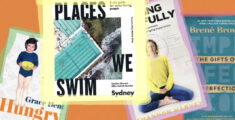The Actors on Your Stage: Gaining Wisdom Through Greatest Challenges
Have you recently found yourself embroiled in a particularly challenging relationship or situation? Perhaps you’ve experienced intense emotions followed by moments of replaying events and ruminating over what went wrong. It’s a common human experience to be triggered by someone or something, and in this article, I aim to delve into the underlying dynamics at play and what these encounters might be trying to teach you.
Yes, it’s true – those around us often serve as mirrors, reflecting aspects of ourselves that we may not readily acknowledge. While it’s easy to point fingers and assign blame to others for stirring up feelings of anger, sadness, or resentment, what if we viewed these interactions as opportunities for growth, healing, and self-discovery?
Understanding the concept of “actors on my stage” took me years to fully grasp. Initially, my ego would latch onto the belief that those who upset me were solely responsible for my suffering. I even found myself projecting my insecurities onto others in unconscious ways, justifying my behaviours. However, as I began to shift my perspective and examine triggered moments from a different angle, I discovered profound insights into my inner landscape and the changes I needed to make.
The “actors on your stage” tool offers a fresh perspective on life and relationships, especially those that leave a lasting impact. Through dissecting this approach, I’ll illuminate the concept of how your greatest adversaries can become your most valuable teachers.
“By reframing my perspective on relationships, I gained valuable insights into my emotional responses and empowered myself to make positive changes.” – Tara Kabatoff

What is a Trigger?
A trigger, or activation, is an unconscious response to an event generated by a person, place, or thing. A trigger rises to the surface as anger, sadness, fear, shame, guilt, resentment, or criticism, inspiring an outward response or even immobilization such as detachment, shutting down, or avoidance. A trigger response can show abruptly, taking over an emotional or mental state and disrupting functioning.
The Actors on Your Stage as a Tool for Inner Guidance
Throughout your life, people will come and go, with many leaving their mark in different ways. Some teach you to love yourself more deeply, help strengthen your boundaries and assert your needs, while others will affirm how compassionate and talented you are. Those who elicit feelings of anger, fear, or sadness can serve as catalysts for self-awareness, healing, and transformation.
What to do when you have become triggered:
Step One: Pause and Reflect
When an instant emotional reaction arises, take a moment to pause and understand its source. Triggers can occur rapidly or build slowly, so rather than reacting impulsively, reflect inwardly. Avoid the urge to retaliate or hastily respond, as it only perpetuates the cycle and feeds the ego’s need for validation or revenge. It is common to view the person or situation as being at fault, but through a compassionate inquiry, a new perspective on the situation and the root cause can occur.
Step Two: Finding The Root Cause
Identify the underlying beliefs contributing to your reaction. Your subconscious holds both true and false beliefs about yourself and your surroundings. For instance, a false belief like “I am not good enough” can overshadow true beliefs, leading to defensive reactions. Take time to address the root cause of the trigger, as it often reveals deeper answers within.
Step Three: Find a Healthy Outlet
Emotional triggers can be stored within the body, necessitating processing and healing. Emotions stem from unconscious and repressed false beliefs, so it’s crucial to find healthy ways to express or release them through confiding in a friend, going for a walk, or conscious anger release exercises. Avoid suppressing or avoiding emotions; instead, find outlets for processing and transmutation.
Final Step: Integrate the change
Once you have identified the root cause, release it from your unconscious mind. Free yourself from unconscious reactions, breaking the cycle. Ego wrestling is quite the undertaking, yet integration marks a crucial step in personal growth and liberation.
Engaging in this exercise has been challenging for me personally. My initial inclination was to deflect blame onto others or ruminate over my emotions. However, by shifting my perspective, I have resolved deeper wounds, unconscious patterns, and false beliefs. As a result, triggers have drastically dissipated, recurring challenges have dissolved, and energetic weight has lifted, resulting in a feeling of liberation and wholeness.
Embrace the teachings offered by challenging relationships and situations to elevate and align yourself with a greater sense of peace and understanding.
To shine light on unconscious patterns and limiting false beliefs, join the Shadow Project – a self-paced program designed to unveil self-mastery, transformation, and wholeness.


































































































